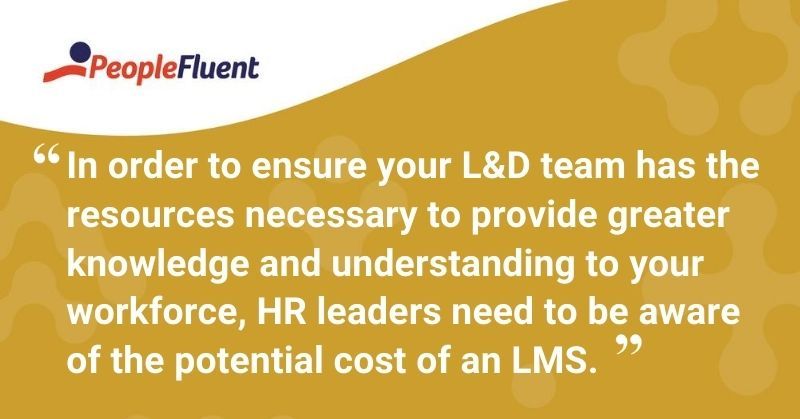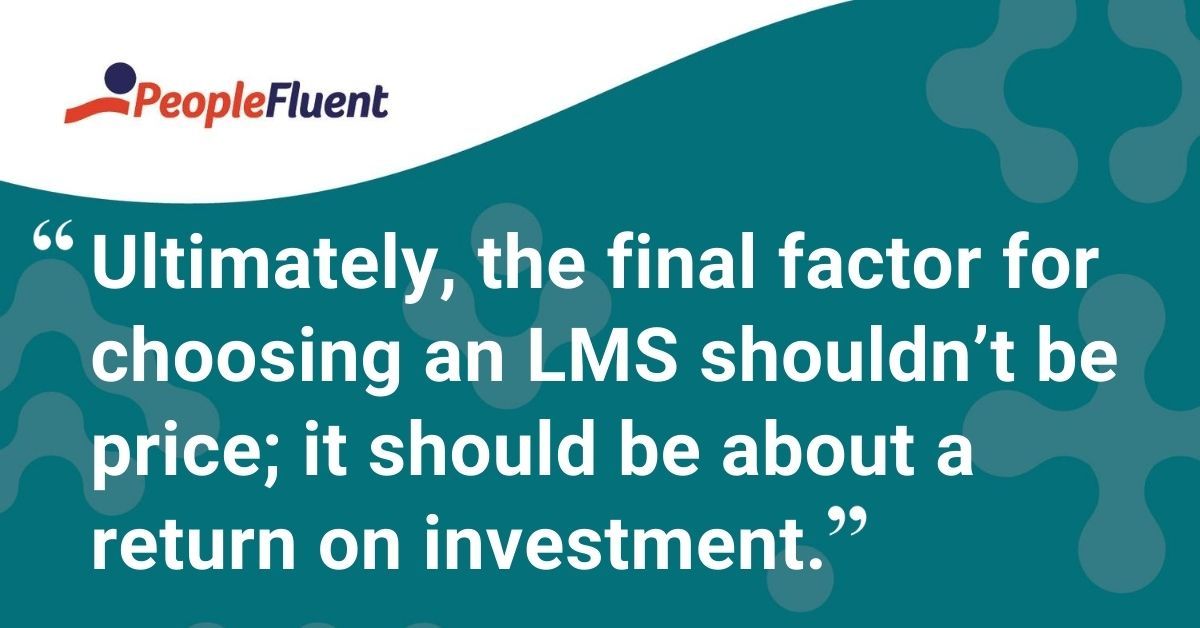Published: Aug 11, 2020Time to read: 6mins Category: Learning
How Much Does an LMS Cost? 2020 Pricing Guide
Like many business tools, the cost of a learning management system isn’t as black and white as buyers may think. When considering the many variables that go into LMS pricing, like total cost of ownership or how a company plans to use a learning management system, savvy decision-makers will be most interested in knowing what value a solution brings to their organization—and what the ROI will be.
In order to ensure your L&D team has the necessary resources to train your workforce and remain compliant, HR leaders need to be aware of the potential costs of an LMS and the subsequent value it brings to the organization.
In this article, we’ve compiled insights from industry and in-house experts to help L&D professionals understand what an LMS costs in 2020 and how organizations can better plan and budget for the investment.
More from the blog: 'Permanent Remote Working? How COVID-19 Is Reshaping the L&D Landscape'
Which Variables Drive the Cost of an LMS?
Prior to researching vendors to address your organization’s training and development needs, it’s important to know which variables will drive the total cost of LMS ownership. LMS vendors will consider these three elements, or variables, when deciding the total LMS cost:
1. Software Costs
Most LMS providers will charge on a per learner/per year basis. However, there are vendors who charge on a per learner/per month or even a per learner/per use basis. For subscription models, it’s important to consider your organization’s growth factor. During the initial discovery phase, it’s wise to also budget for a possible increase in user base (e.g. new hires), especially for high turnover or growth-focused companies. Even at $10/user, for instance, this oversight could become costly.
2. Implementation
An L&D professional may not always think to budget for training, client support, data migration, configuration, and/or additional support and services when considering LMS providers. However, these are all critical to the success of LMS adoption—by administrators and learners alike. Although these implementation costs are highest at the beginning of an agreement, they’ll provide you with a clear idea of what the first year’s costs will be and how the ongoing costs could decrease.
That’s why this one underestimated question is critical during the bid process: What is necessary to configure and prepare the migration from one LMS to another? The answer can help add weight to a business case and ensure you’re fully prepared for extra costs and/or planning that may be required when onboarding a new learning platform. While some vendors may include in-house client training and support, others will outsource to third parties which means extra costs will be incurred.
You might also like: ‘Building an LMS Implementation Project Plan: 5 Things You Need to Know’
3. Add-Ons and Integrations
In order to choose the right solution, there must be a use case for add-ons and integrations that outlines how these additions will benefit future learning needs. Rather than solving for the now, leaders must be able to visualize how an LMS will help evolve the organization’s L&D goals.
To help separate the necessary functionalities versus the extraneous ones, plan your organization’s short and long-term learning goals, and ask vendors how specific add-ons or integrations may help solve for the respective pain points. For example, if it’s important to integrate an LMS with an existing HRIS, be sure to ask potential LMS vendors if this is an extra cost.

Related reading: ‘Your LMS Integration Plan: Why are APIs so Important?’
Is It All About the Money?
Yes, and no. Ultimately, the final factor for choosing an LMS shouldn’t be price; it should be about a return on investment. While it’s important to understand how much a solution will cost, business leaders will be most concerned about how HR establishes a value proposition.
Rather than explaining what an LMS costs, HR professionals should translate the potential cost into a successful business case by outlining the following:
- What business challenges will this LMS solve?
- How much will the company lose if these challenges aren’t solved?
- What business goals are a priority and how can developing talent achieve these goals?

Handpicked for you: ‘How to Measure the Success of Learning Programs’
How to Choose the Best LMS
When the time comes to compare LMS vendors, there are a few other considerations that can help guide the decision-making process, such as:
- Is the vendor a good business partner? Whether or not a vendor will be by your side for the long haul is just one of the critical factors that make a good business partner. LMS buyers should also identify if a vendor’s company culture aligns with theirs and if they will be there to provide support and guidance when needed, specifically when your company is looking to grow.
- Does it offer the required functionality? In order to truly know if an LMS provider can meet your organization’s learning needs, LMS buyers must be specific about the necessary functionality they want. L&D professionals should work with vendors to best understand how to get the greatest value from an eLearning solution. This includes establishing a clear vision of how an LMS will be used and 3-4 key features that the solution must have before a buying decision can be made.
- Does it fit your learning strategy? Think about how your organization behaves in the present and how it will behave in the future. And, what impact that could potentially have on users, how they behave, how many there are, where they stand, and what they need to learn. A good technology investment should scale a well-thought-out solution that includes people, process, and tech.Without a solid learning strategy to anchor decisions, many companies overlook their people and their processes; especially when the onus of product adoption falls on the provider.
- Does it align with your organization’s future learning goals? Ask yourself how adaptive your learning is and where it may be going in the future. Otherwise, there’s downward pressure on an LMS to act like a Swiss Army knife, rather than allowing it to train for the required specializations. This is where setting up a learning task force can help. This should include business executives who are decision-makers along with HR and L&D teams who can identify the necessary functionality needed to address the organization’s learning needs as a whole.
Discover How Learning Builds Skills and Ensures Compliance
Design, deploy, track, analyze, and report on enterprise learning and compliance programs. PeopleFluent helps you execute your programs seamlessly, so employees upgrade their skills and you get results.